As the nesting seasons for most birds are spring and summer, now is the time for baby and juvenile birds to spread their wings a bit, so to speak. Finding a baby bird where it doesn’t belong—on the ground—can be very concerning as well as confusing. What should you do? Should you pick it up and try to help, or leave it where you found it? If you touch a baby bird, will its mother reject it? We’ve got all your answers right here.
Is the Bird a Hatchling, Nestling, or a Fledgling?
When you come upon a baby bird out of its nest, it’s important to first determine whether the bird is a hatchling, nestling, or fledgling.
A hatchling is a bird that has recently hatched from the egg, while a fledgling is a young bird. Hatchlings look more like newborns: they have no hair, and their eyes are closed. Typically, if a hatchling is on the ground, it’s likely that it’s fallen out of the nest due to weather or another nest disturbance. If you find a hatchling on the ground, they need help, since they are unable to fend for themselves and will likely die without assistance.

A nestling is slightly older than a hatchling but is still not capable of being on its own. Nestlings are typically around three days to two weeks old, and often have a few sprouted feathers. If you find a nestling on the ground, they will need help as they are, like hatchlings, vulnerable to weather, predators, and malnourishment.
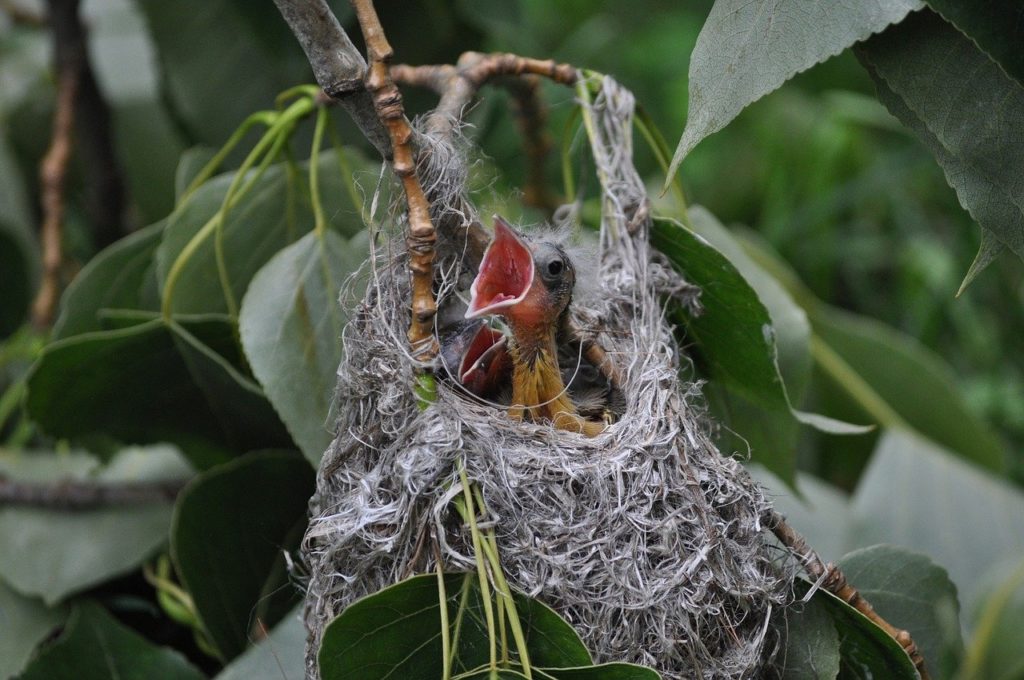
A fledgling is a juvenile bird that is older than nestlings (typically around two or more weeks old). They have their eyes open and have already begun to develop feathers. They are still learning to fly and are often found on the ground hopping and flitting around after a failed flight attempt. If you find a fledgling on the ground, it’s likely that they are fine just where they are—without need of rescue.

How to Help a Grounded Baby Bird
When you come upon a hatchling or nestling on the ground, look for a nest in the area; it’s likely to be within a few yards. Then follow these steps:
- Put on gloves (or, if you don’t have gloves, wash your hands).
- Gently pick up the baby bird and place it back into the nest.
NOTE: If the nest has been damaged or is too high to reach, you can place the bird in a woven basket from your local garden store and hang it on a low branch. A basket looks to birds like a natural nest, and the weave design will allow rain water to drain through it and prevent the baby bird from drowning.
- Watch from a distance to see if the parent comes back to the nest. This may take a few hours, so if you can’t stay, try to come back later that day to check.
If the parent bird doesn’t return to the nest, or you can’t find the nest:
- Using gloved or clean hands, place the bird in a container (e.g., a shoebox) lined with soft cloth. You can use paper towels, a baby blanket, a piece of clothing, etc.
- If you have a heating pad, place it on the lowest setting and put it under the soft bedding to keep the baby bird warm. A hot water bottle also works well.
- Place the box with the baby bird in a dark, quiet place away from people and pets.
- Don’t give the bird food or water.
- Contact your local wildlife rehabilitation center to arrange for further care.
Is the Bird Injured or Sick?
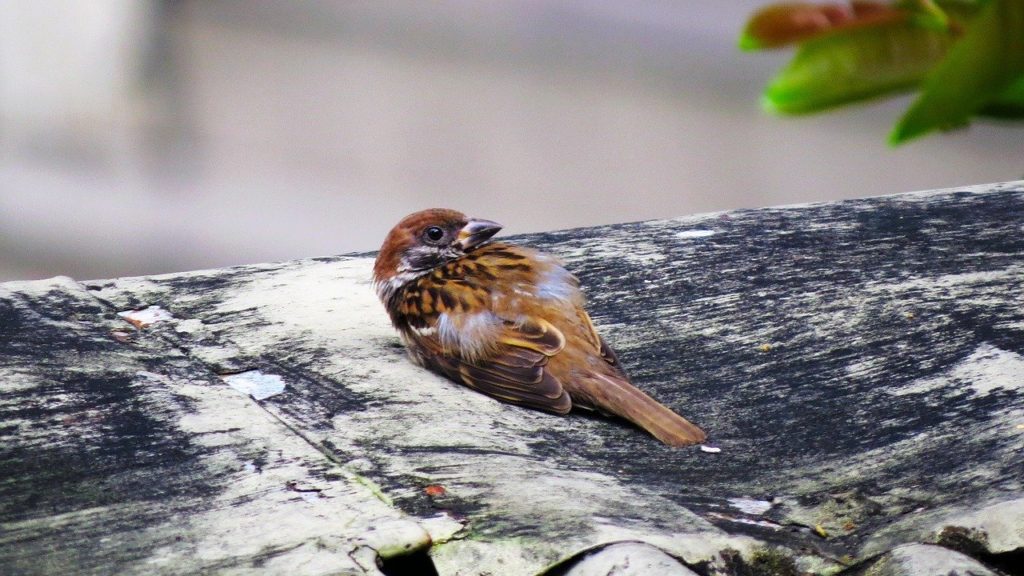
Whether the grounded bird is a baby or not, you should also observe it for tell-tale signs of sickness or injury, which could include:
- Dirty, matted, or missing feathers
- Fluffed feathers
- Visible injuries, like cuts or wounds
- Swollen and/or dull-looking eyes
- Drooping wings
- Limping or wobbling
- Tilted head
- Stillness, even when approached
- Inability to fly (for birds older than fledglings)
- Difficulty breathing; puffing or panting
How to Help a Sick or Injured Bird
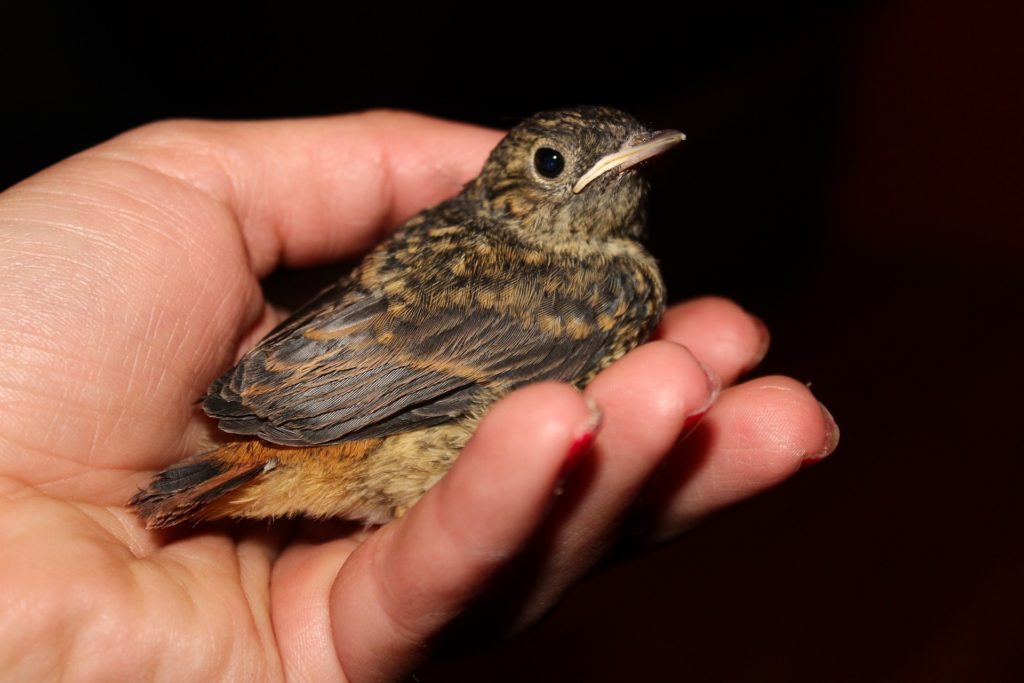
- Wearing gloves, or with clean hands, gently pick up the bird and place it in a covered box with air holes and a cloth or soft bedding.
- Place the box in a dark, quiet place away from people and pets.
- Don’t give the bird food or water.
- Contact your local wildlife rehabilitation center to arrange for further care.
Why You Shouldn’t Keep a Baby or Injured Bird and Care for It Yourself

Stepping in and giving the bird initial care is one thing, but you shouldn’t try to keep and care for a baby bird or one that is sick or injured. Other than the fact that the bird has a better chance of surviving under the care of wildlife rehabilitators and other professionals, the Migratory Bird Treaty Act of 1918 states that it is illegal to keep wild birds. So, while it’s commendable that you acted as a “first responder” and rescued the bird, it’s important to turn it over to professional care as soon as you can.
Below is a handy What To Do If You Found a Baby Bird infographic that summarizes how you can best help our littlest feathered friends:

Join Us for a Bird Walk!
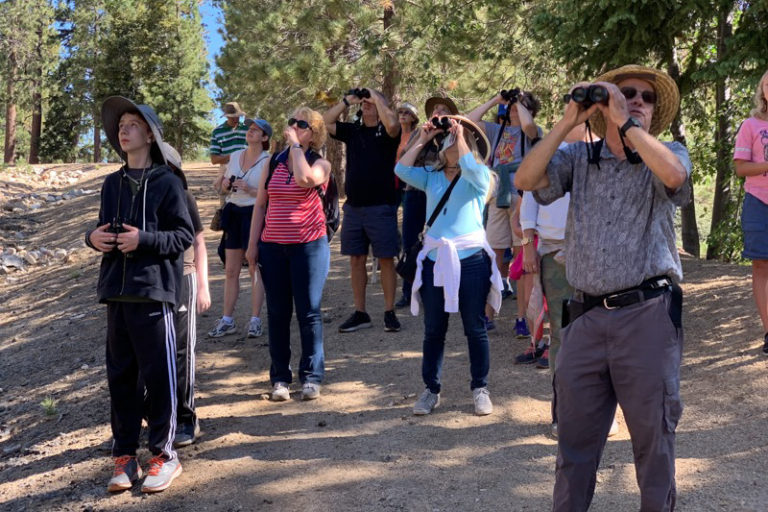
Would you like to learn more about baby birds and other local wildlife? If you live in the Big Bear area, or are planning to visit, join us for one of our popular Bird Walks! Don’t live in the Big Bear area? We have virtual Bird Walks on Zoom, Facebook Live and YouTube! Check out our schedule here. Looking forward to having you join us!

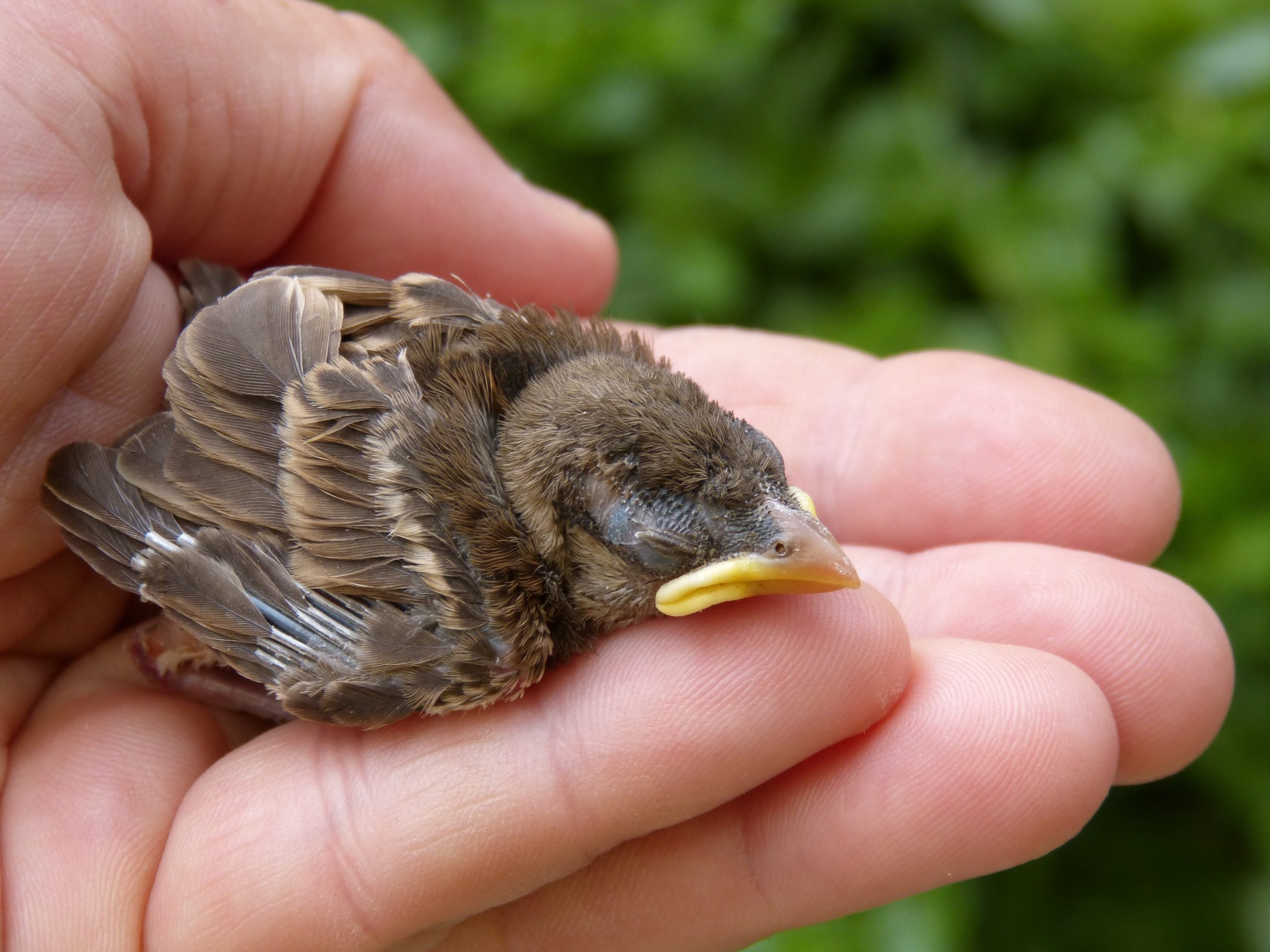

4 comments
Interesting! Thank you for the info.
Good and useful information, thank you!
I think this is fantastic information
for adults and children.
Thanking you for this knowledge.
Royal Phillips
It is a nice way to help nature!